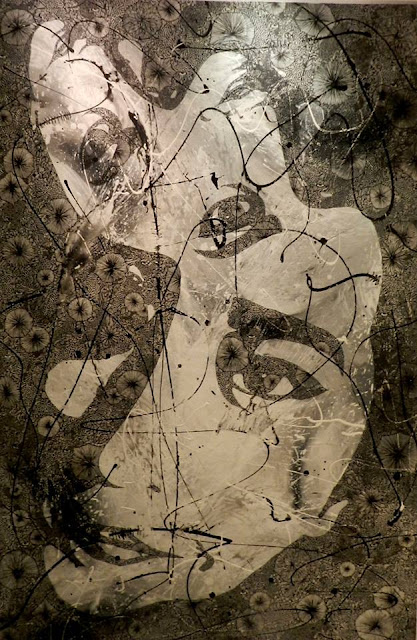By Arnel Mirasol
 |
| Cultivating My Own Flawa, 2015, acrylic on canvas, 3 X 4 feet |
Flaws are part and parcel of everything. Nature has them. and so do human beings. Artists, by being more sensitive and attuned to outward appearances, are very much preoccupied with finding flaws. But they do not seek flaws to denigrate: they seek them to correct and perhaps make those who have them more visually appealing. Flaws shouldn't be look at as something permanent. They should be starting points on our path to bettering ourselves. Artists in particular should consider flaws not as prison walls that confine, but as hurdles to jump over and leave behind. That is the essence of life - the struggle to attain perfection or something resembling it. Again, the swirling drips of paint can be seen as something other than what they are - they could be looked upon now as the flaws marring the faces. But then, it is these twirls and swirls of white and black paints that lend these painting its abstract expressionistic charm. Without them, the bravura and dynamism that are this painting's principal strength would be lost. We now come to the question of Adam Nacianceno's choice of palette. Why does he persist in his achromatic ways you may ask. Nacianceno said that white and black represent for him the two principal landmarks in a man's like - which is birth and death. In between these two, according to him, are the various shades of gray, which a creative and resourceful man could turn into a full spectrum of colors that would represent a life lived to its fullest potential.



















